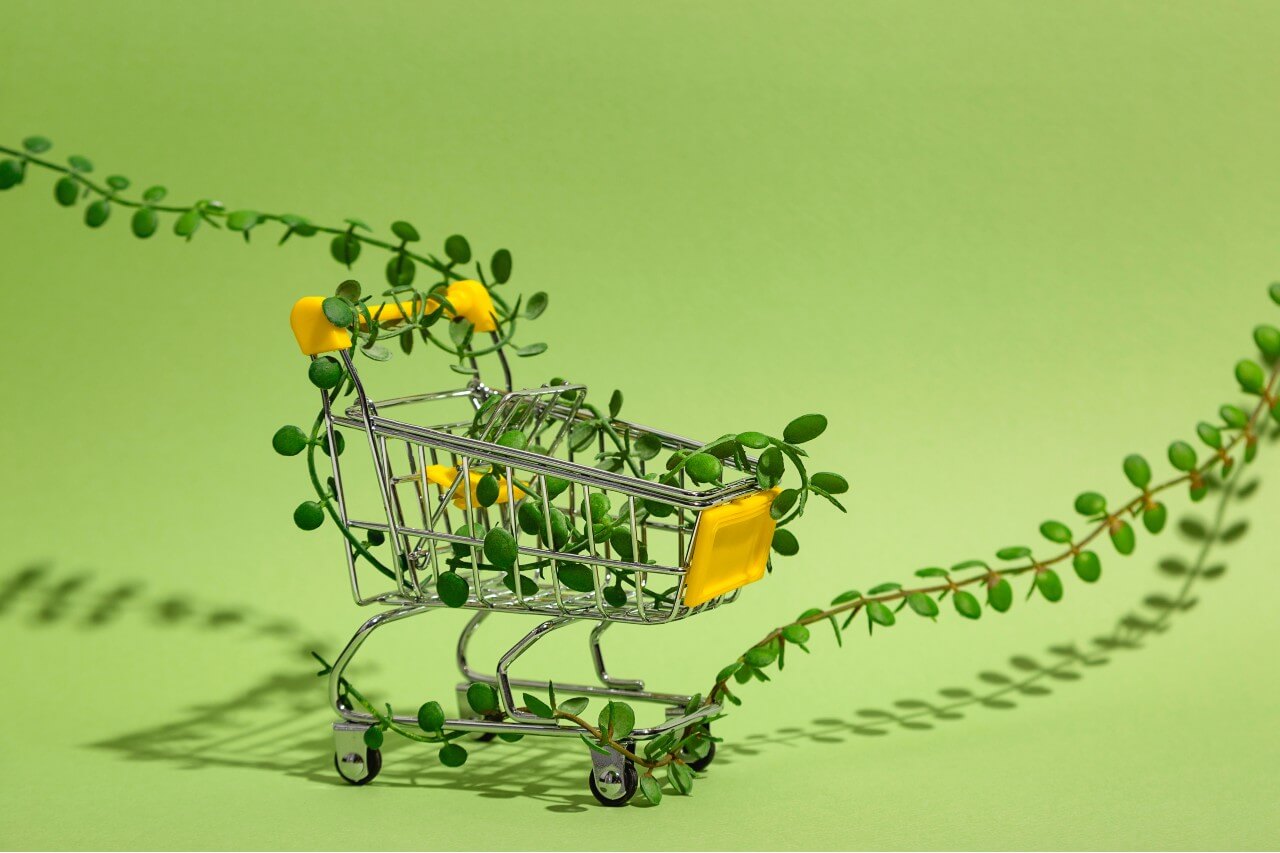Today’s consumers rank sustainability as a major factor in their purchasing decisions, making retail shareholders and investors take a greater interest in sustainability than ever before. Sustainability is not only a good choice for the planet, it’s good business.
JRTech Solutions looks at practical ideas for improving the sustainability of your retail business.
5 ways retailers can help reach global sustainability goals
Sustainability in retail involves going beyond regulations and current standards to embrace new technology and behaviours.
Sometimes the choice is as simple as changing to environmentally-friendly packaging or applying the three ‘R’s’ (Reduce, Reuse, Recycle).
More complex solutions include replacing inefficient equipment and improving building maintenance. When it comes to sustainability, every decision matters.
1. Heat and cool your retail premises efficiently
Heating accounts for 29% of energy costs on non-domestic buildings. Depending on how well you manage the temperature of your retail space and where your business is located, this could also be a big part of your carbon footprint.
Begin by making your store entrances and exits efficient: use energy-efficient doors and take advantage of corners and ramps to manage the exchange of hot and cold air from outside.
By upgrading your heating controls, you can conserve energy and still keep your staff comfortable. Use a compensator to regulate indoor temperatures based on external weather. You could also install an optimum start/stop control so that your thermostat optimizes heating based on the time it takes to reach the desired temperature. In roughly two years, you should see a return on your investment.
In summer, take advantage of natural ventilation. Can you safely use windows and doors to cool the air instead of turning on the air conditioning? Letting in the cooler night-time air can efficiently lower the temperature of a space, cost-free.
2. Maintain buildings for sustainability
A building in poor condition will use more energy. To keep your retail location in good condition, create an inspection and maintenance schedule.
Damaged walls, windows and doors should be repaired promptly. Gutters and pipes should be kept in top condition. Encourage staff to report problems as soon as they see them.
Insulation can reduce heat loss and wasted energy significantly. Insulating pipes alone can reduce energy losses by 70%, and insulating a roof can cut a quarter of your heat losses. It’s worth taking your maintenance agenda one step further.
3. Switch to sustainable packaging
Customers will be the first to notice this upgrade, but retail business owners will also benefit. It isn’t realistic to promise ‘zero packaging’ and you should avoid ‘greenwashing’ (making misleading claims about your commitment to sustainability). Sustainability is a long-term effort that should not be treated as a trend.
Numerous studies have proven that plastic pollution is a major problem for our oceans and wildlife. The degrading effects of our wasteful habits have been repeatedly brought into the spotlight by world-renowned environmentalists like Sir David Attenborough.
Since December 2022, the manufacture and import for sale of certain single-use plastics in Canada is prohibited, including checkout bags and food service ware made from plastics that are hard to recycle.
Packaging is an important part of branding, and choosing to go green in this area can improve consumer ratings and brand image. Begin by committing to reduce, recycle and reuse whenever possible.
Retailers should keep up with the latest news on plastic use and find sustainable alternatives.
Some examples of eco-friendly packaging include:
- Recycled cardboard and paper (especially cardboard boxes)
- Organic ecological textiles for packaging
- Biodegradable plastics and recycled plastics
- Compostable mailers
You can also choose packaging materials that can be repurposed, offer a return program for empty containers, or work with wholesalers to reduce numbers of shipments and limit return shipping.
4. Make equipment upgrades
Retail spaces of any size need various types of equipment to run smoothly. Making sustainable choices in these smaller decisions can still have an impact on your budget. Visible upgrades will also show staff and customers that sustainability is important to you.
Consider doing the following:
- Install electric hand dryers in bathrooms to save paper
- Use automatic lighting sensors in bathrooms and stock areas to use less electricity
- Install water-efficient sinks and toilets to reduce water waste
- Buy the highest energy efficiency-rated equipment, such as Energy Star-certified products, which include appliances, doors and water heaters
In food retail stores, refrigeration is a major area of energy loss. Use recommended temperature settings and perform regular maintenance, such as defrosting, checking door seals and refrigerant levels, and cleaning condensers.
Putting doors on horizontal cases can reduce energy demands by 50%. Customers may initially note this as an inconvenience, but the most common complaint among food shoppers is that store interiors are too cold. Open refrigeration has a lot to do with this, so installing doors could save energy and ultimately please your consumers.
Switching to digital signage allows you to promote seasonal events without the expense and waste of producing physical posters and displays.
5. Invest in new technology
The United Nations established Sustainable Development Goals in 2015. Goal 12 on this list aims to “halve per capita food waste at the retail and consumer level and reduce food losses along production and supply chains by 2030”. Various technological initiatives have been taken to make this a reality, with 70% of consumers expecting grocery stores to show commitment to reducing food waste.
To combat food waste and encourage sustainable shopping practices, many stores have implemented an effective strategy — selling discounted products nearing their expiration date. Our Pricer electronic shelf labels simplify this process by allowing for real-time price reductions and promotions to be easily displayed.
Additionally, integrating our Pricer ESLs with an AI-based dynamic pricing solution like Whywaste streamlines the shopping experience for customers while reducing the time staff spend checking expiration dates. This not only benefits the environment but also increases in-store revenue for retailers.
Efficient inventory
It is common for retailers to have either too much or too little of a given product due to inefficient inventory maintenance. Electronic shelf labels make it easy to access data for planning purchases and keeping stock levels accurate.
This means fewer lost sales due to low stock, and fewer capital tied up in stock that will not sell.
Digitized date checking
Checking expiry dates takes time – a lot of time. A digitized solution is quicker and more efficient, which can have a major impact, especially for products with shorter expiry dates like dairy and baked goods.
ESLs allow for digitized date-checking, meaning you only have to check products that are nearing their expiry date and are at risk of becoming waste. Roughly a third of food produced worldwide is lost or wasted, according to the UN Environment Programme.
Dynamic pricing
ESLs help retailers work with all the information they need: demand, expiry dates, and selling prices. Efficient stocking means getting one step closer to global sustainability goals.
Improve retail sustainability with JRTech Solutions
Sustainability is here to stay. Consumers expect retailers to show real commitment to reducing waste, maintaining sustainable buildings and going that extra mile by minimizing energy consumption.
As the North American leader in electronic shelf label systems and digital displays for retail, JRTech can help you implement technologies that improve sustainability and reduce costs for your retail location.
Contact us today to find out more about our in-store technologies for retail.


